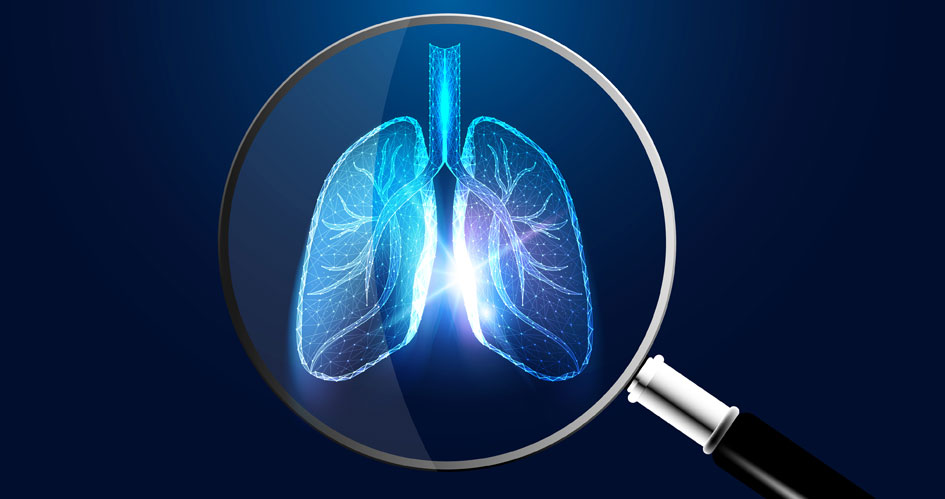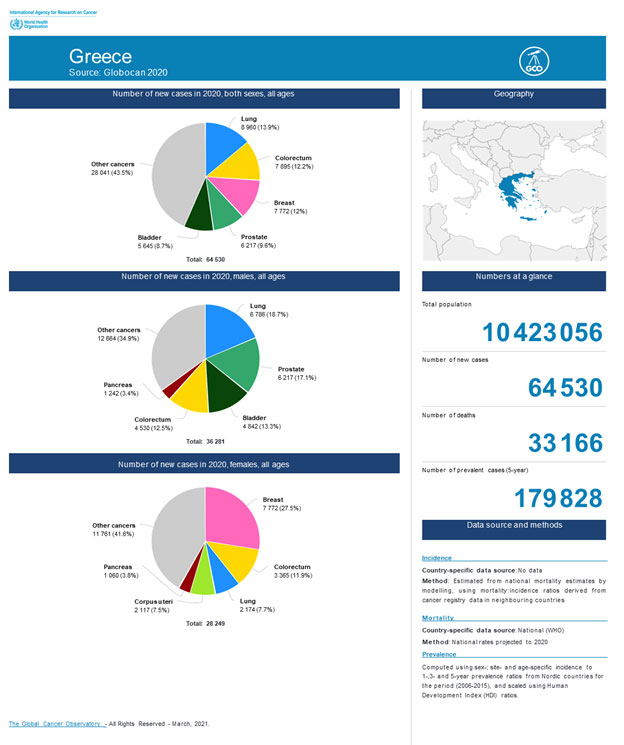
Cancer is a generic term for a group of diseases which can affect any body organ or system characterized by rapid, uncontrollable and abnormal cell growth and division, as well as the ability to spread throughout the body (metastasis). The cancer is usually named after the organ where it started from, for example lung cancer whereas metastasis from another organ to the lungs is not lung cancer, but cancer of the organ of origin that has spread to the lungs.
Lung cancer is the most common cause of death from cancers in Greece1.
Tobacco smoke through both active and passive smoking is responsible for more than 80% of all lung cancer cases indicating it is a highly preventable disease. A much smaller percentage of cases are attributed to occupational and environmental exposures to known carcinogenic factors such as asbestos, radiation, radon, beryllium, chromium, diesel exhaust and arsenic. 2
An important characteristic of lung cancer is that it develops slowly over time usually taking up to two decades for signs and symptoms to appear (time-lag effect).
In reality, the negative health effects begin from the first cigarette and cumulatively add-up over time (dose and duration-dependent). That’s why physicians ask about the number of cigarettes smoked per day and years of smoking so they can calculate number of pack-years (PY).
PY= number of packages smoked per day multiplied by years of smoking
Symptoms of lung cancer are relatively vague and vary by each person. Many times symptoms do not present until the cancer has spread to the rest of the body. Some of the symptoms can include3:
Lung cancer has several histological types. Prognosis is different for each case depending on several factors, most importantly, the histological type and disease stage at the time of diagnosis. In clinical practice the main lung cancer differentiations are small cell and non-small cell lung cancer, requiring different therapeutic approaches.
Treatment options include surgery, chemotherapy and radiotherapy. Recent advances in chemotherapy (immunotherapy, molecular, targeted or precision therapy), in surgery (minimal invasion and video-assisted procedures) and in diagnosing and staging (CT scan, PET scan, endoscopic ultrasound) have led to early diagnosis, improved prognosis and quality of life.
Lung cancer caused by tobacco smoke is completely preventable through tobacco smoking prevention and cessation.
There is no safe limit for smoking or passive smoking. It is highly recommended to avoid smoking and second-hand smoke in order to prevent ever occurrence of lung cancer. Smokers are considered a population at high risk for developing lung cancer. Therefore, the United States Preventive Services Task Force (USPSTF)5, in their 2021 updated guidelines5, strongly recommend an annual screening with low dose chest CT scan for asymptomatic smokers and former smokers aged 50 to 80 who have smoked 20 pack years or more and either continue to smoke or have quit within the past 15 years.
Lung cancer is the 3rd overall cause of death in Greece. Additionally, tobacco use is the risk factor responsible for the highest mortality and disability in Greece6.
Lung cancer represents the most common cancer incidence in males (18.7% of new cancer cases in 2020)7, and the 3rd most common cancer incidence in females (7.7%), following breast (27.5%) and colorectum (11.9%) . However, lung cancer incidence in women is expected to increase in the future due to increased smoking prevalence among women in recent years8.

Smoking and Passive smoking are decreasing in Greece! Smoking prevalence has been steadily declining in Greece since 2012, in particular in a nationwide survey conducted in 2012 smoking prevalence was 37%, whereas in a study conducted in 2020 smoking prevalence was 28%, showing a 24% reduction8! This reduction supports the expectation of a future reduction in lung cancer cases .
ANNA S. TZORTZI MD, FCCP
PNEUMONOLOGIST
References
